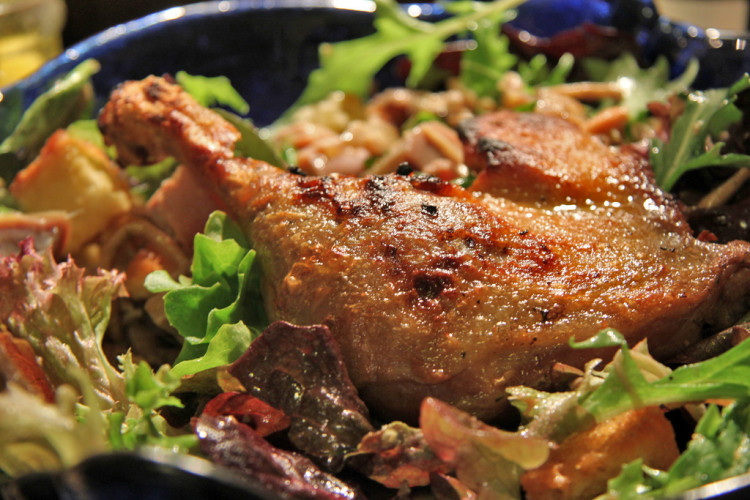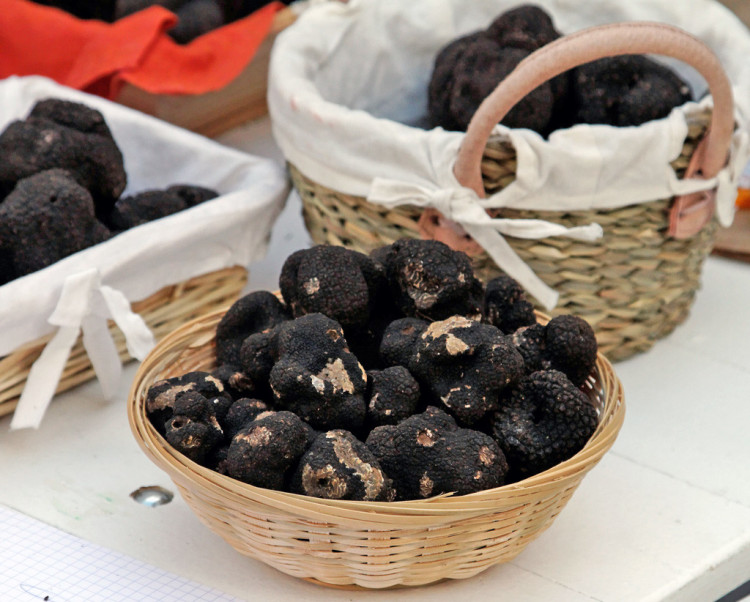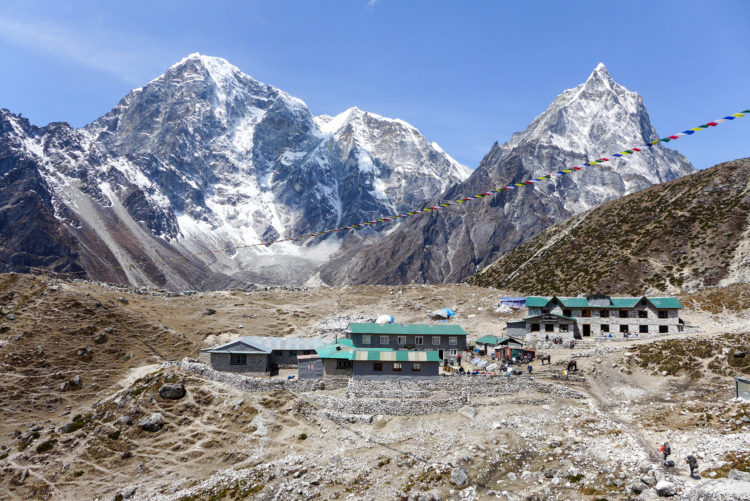Haute Cuisine: Southern France’s Most Indulgent Foods
In Southern France – particularly in the Dordogne – it’s easy to feel like you’ve stepped back in time to a place quite isolated from the rest of the world. Medieval castles blanket the hilltops and prehistoric caves are home to some of the oldest known cave paintings in the world. Townships host a market once or twice a week, where you’ll find some of the best culinary pickings on offer, produced the way they have been for centuries. Accordingly, price tags range from reasonable to extortionate.
Despite this region’s humble environs, it is home to some of the richest and finest French delicacies that grace the tables of top dining destinations across the world. Here are some of the most indulgent foods you can find in Southern France.
Foie Gras

Smoked duck foie gras. Credit: kowarski, Flickr
Literally “fatty liver,” this typical French delicacy has a creamy-smooth consistency. The duck or goose liver usually comes in small tins or blocks. It is rich and buttery with a delicate but sophisticated flavour—as for what this elusive flavour actually is, you’ll have to try it for yourself!
But there is a controversial catch: The foie gras made in France is most often the product of force-feeding the animal, a practice that has come under scrutiny now more than ever. Fortunately, foie gras is increasingly being made more humanely, and if you can’t afford a pure block of the stuff (prices are more akin to those of precious gems than food), many of the pâtés de foie gras come close enough to impress the socks off most people.
Confit de Canard

Confit de canard. Credit: Matt Ryall, Flickr
There may not be a more decadent way to serve duck. This dish, “preserve of duck,” if done correctly, yields a fall-off-the-bone, melt-in-your-mouth leg of duck with an almost impossible richness of flavour. The preservation process, a speciality of southwestern France, is one of the oldest ways of preserving food in the world. Salted and seasoned, the meat is then cooked very slowly, submerged in its own fat, then set to cool and preserved in that fat. Typically, confit de canard ordered in a restaurant is then cooked at high temperature to produce a lovely, crispy skin.
Confit de canard is a dish that you will see on almost every menu at restaurants in the region, and is absolutely worth suspending your diet for an evening.
Truffes

Black truffles from Perigord. Credit: Kimon Berlin, Flickr
A slightly more acquired taste (we’re not talking about chocolates), these unremarkable-looking, pungent little lumps—“truffles” in English—are a type of mushroom that grow underground. It only takes a few shavings of this rich fungi to impart delicious flavour to an entire omelette, or to infuse your favourite oil for dressing.
Black Périgord truffles are so named for the Périgord region in which they grow, one of the highest producing regions of truffles in the world. In fact, the particular area, Périgord Noir, has been so named after these black truffles. Once cultivated and enjoyed by a large number of people, they have since skyrocketed in price and are considered a rare delicacy mostly reserved for special occasions.
As if the truffles themselves weren’t unusual enough, looking for them in open ground requires specially trained pigs known as ‘truffle hogs’, which have a honed sense of smell to detect them at up to 15 centimetres down. The only trouble? Preventing the pig from eating the truffle itself!
Indulgent food all year round
Unlike some of the seasonal attractions of southwestern France, these culinary delicacies can be enjoyed outside the busy summer period. Both foie gras and confit de canard are often preserved in tins, and the best time to enjoy truffles is actually in January and February when they have just been harvested.
A trip to this part of the world would be incomplete without indulging in the treasured foods that have helped define the uniqueness of the region and the prowess of France’s culinary traditions to the world. Bon appétit!
Did we miss your Southern French food favourite? Share it with us in the comments!
Nicola Brown
Latest posts by Nicola Brown (see all)
- 48 Hours In: Québec City - January 30, 2018
- Top 5 Best Travel Articles of 2017 - January 9, 2018
- 48 Hours in: Miami - December 19, 2017







 Almost all the tea houses in
Almost all the tea houses in 











